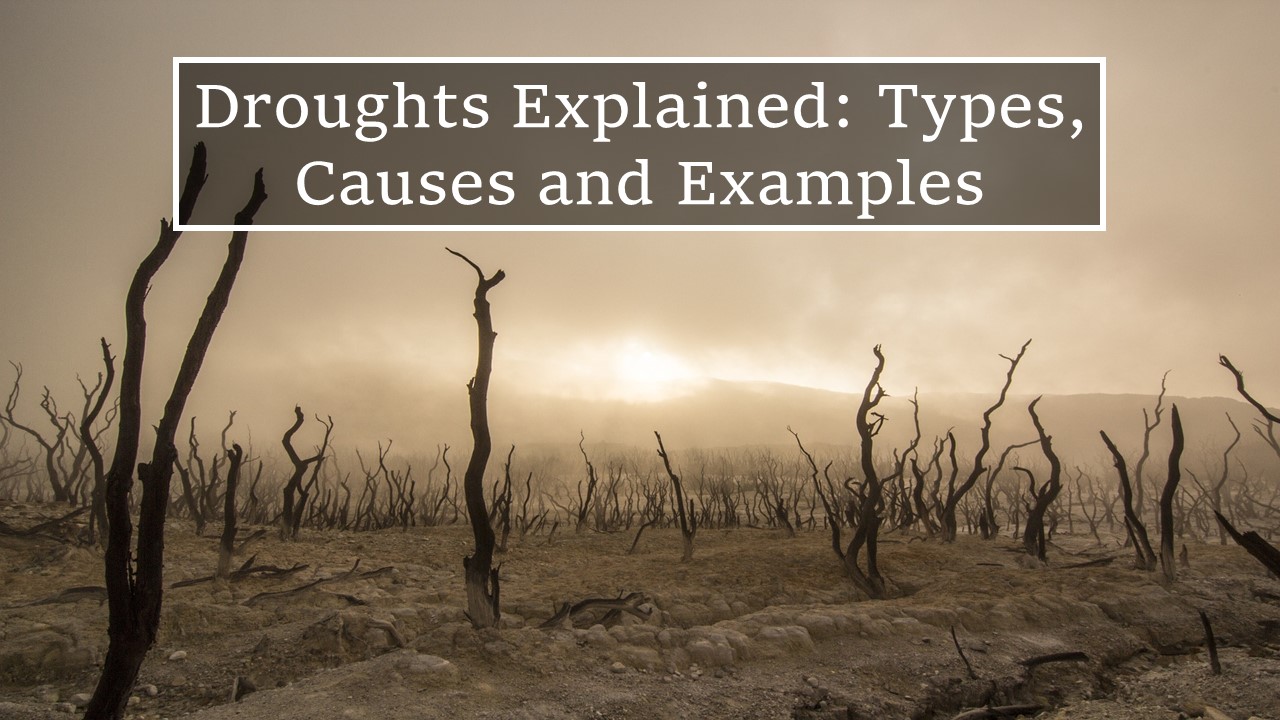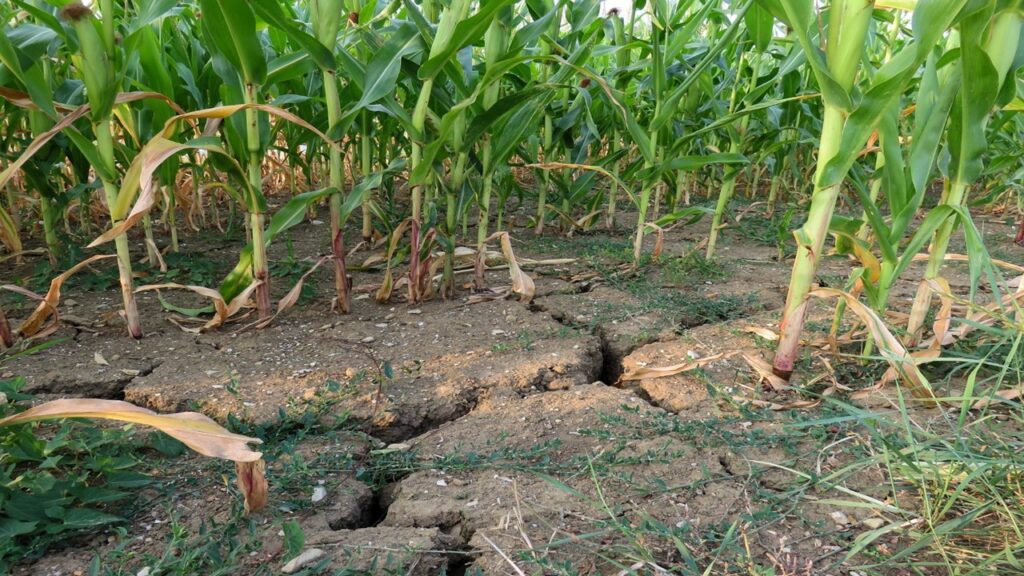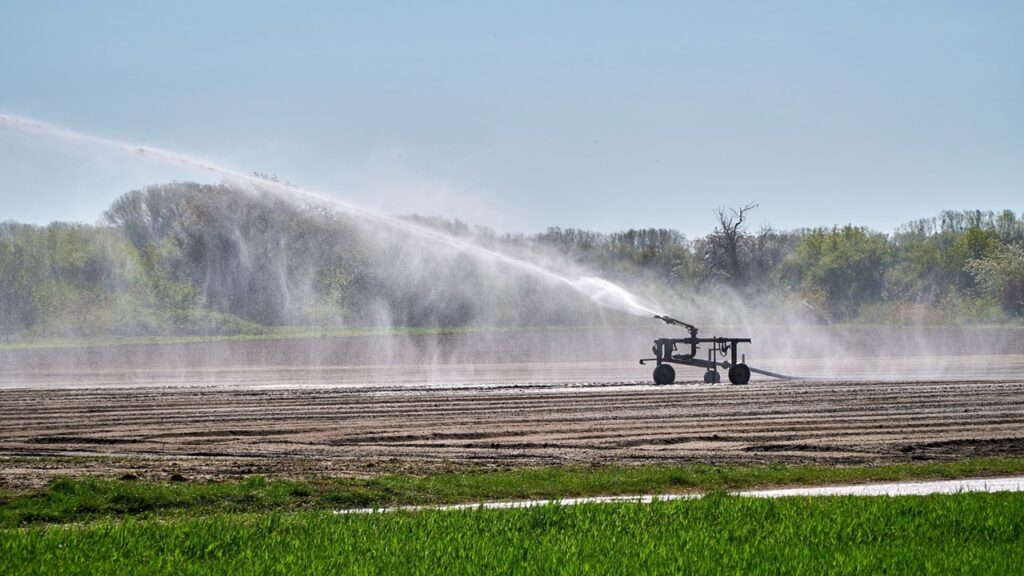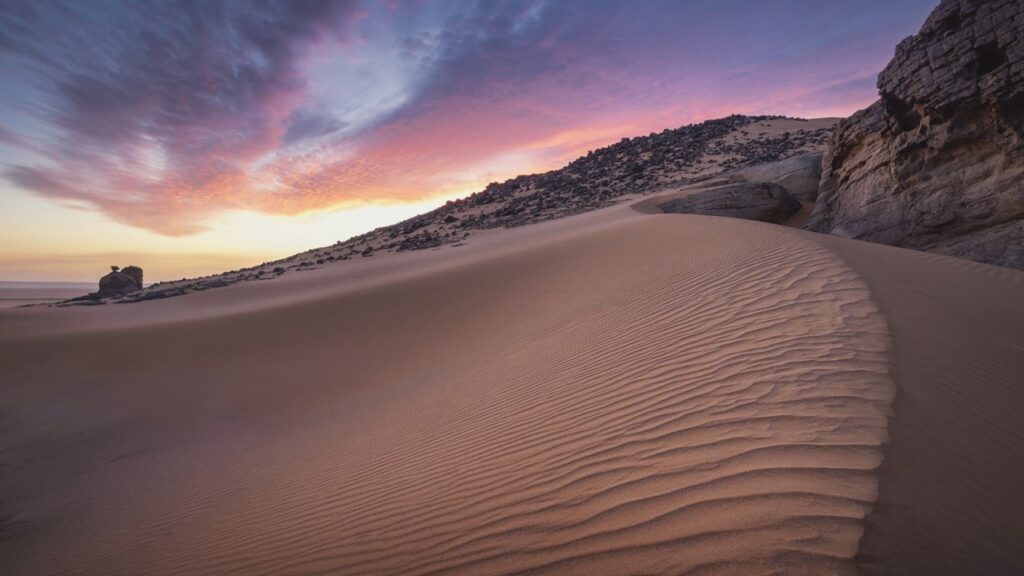Droughts Explained: Types, Causes and Examples

Droughts are episodes of beyond normal dry seasons. They can occur due to natural reasons like a lack of rainfall or because of human activities like damming rivers. As it is, archaeologists declare that Pharaohs’ rule in Ancient Egypt came to an end due to a drought event that hit the Middle East 4500 years ago. Today, scientists contend that with climate change there may be more frequent and severe droughts around the world.
What is a drought?
Unlike other natural hazards like earthquakes and flooding, it is quite difficult to define a drought. This is because it is typically a slow onset event and the effects accumulate over time. As a result, it is very hard for us to assess when it begins and ends.
Nonetheless, we basically define drought as a period of drier than normal conditions. It usually occurs due to a lack of rainfall or other water-related factors like snowmelt. Or it can be due to high temperatures and low humidity levels. It also occurs over large areas and can range from a few months to several years.
Types of droughts
There are generally four main types of droughts related to specific fields. They are meteorological, agricultural, hydrological, and socioeconomic droughts.
1. Meteorological droughts
Meteorologists define droughts according to the degree of dryness and how long it lasts. They compare average rainfall levels to average conditions to measure it. Meteorological droughts are region-specific as the amount of rainfall varies from region to region.
2. Agricultural droughts
Agricultural droughts refer to dry conditions that hinder the growth of crops thus resulting in poor harvests. They arise because of a lack of moisture in soils which in turn is due to local weather conditions.

3. Hydrological droughts
These occur when a lack of rainfall lowers the water level in the ground, streams, and reservoirs. While a lack of rainfall can immediately lead to a meteorological or agricultural drought, it takes more time for a hydrological drought to appear.
4. Socioeconomic droughts
As for socioeconomic droughts, it is when the lack of water affects people. It occurs when the demand for water is greater than supply.
Snow droughts
A snow drought occurs when there is a decrease in the amount of snow over a specific period of time. Snow droughts can be cold or warm. We refer to them as dry when the snow is below normal temperatures or there is a lack of snow. And we call them warm when the snow is mostly in the form of rain or when the snow melts unusually earlier.
Basically, when snow falls, it accumulates in layers called snowpack. As the temperature rises in spring, the snowpack melts filling human-made reservoirs and replenishing ecosystems. Communities worldwide like in the Hindu Kash, Andes Mountain and Patagonia Mountain depend on snow meltwater as a source of freshwater.
2021 California drought due to snow drought
Today, with warmer temperatures due to climate change, snow droughts are becoming common globally. In fact, scientists relate the drastic 2021 drought in California to a snow drought. Snow melts earlier in spring while drier air evaporates the runoff more quickly thus causing droughts in lower regions.
Causes of droughts
Droughts occur mostly due to natural reasons but human activities can also initiate them.
Natural causes
1. Changes in the water cycle
The water cycle refers to the continuous movement of water from the surface of the Earth to the atmosphere. Water typically evaporates as water vapor and condenses to form clouds. Winds blow clouds to particular regions where they eventually fall back to Earth as rain or snow.
Sometimes, blocks of air can halter the movement of winds in the atmosphere thus changing local weather conditions. Winds carrying clouds can thus change directions resulting in droughts in particular regions.
2. Increase in temperature
When temperature increases, more water evaporates from the land and oceans. So, if the temperature is cool in a region, very little moisture is carried to other places. Consequently, it can lead to drought in those places.
Climatic patterns can cause droughts
Sometimes, anomalies in temperature can affect air circulation as well. As a result, rainfall patterns change. Climatic patterns like El Nino and La Nina are such examples.
Both El Nino and La Nina affect countries found around the equator like southeast Asia, eastern and southern Africa. El Nino events typically increase the temperature of the sea thus leading to droughts. As these nations rely heavily on agriculture, a single drought event has severe consequences on food production.
3. Changes in climatic conditions
Climate refers to long-term weather conditions. As it is, climatic conditions change over time, from year to year or decade to decade. We call this the natural climate variability. It can be due to changes in the sun’s energy, volcanic eruptions, changes in the Earth’s orbit, etc. So, when these changes occur, they can result in natural hazards like tornadoes and droughts.
Human causes
1. Deforestation
In regions like the tropics, local water cycles create rainfall. Forests lose water through evapotranspiration. This water then condenses to form clouds. As these clouds become too heavy, water falls back to Earth as rain.
But when we cut down trees, there is less evapotranspiration. Consequently, less clouds form and less rain falls. As an example, scientists link droughts in southern Brazil to deforestation in the Amazon Basin.
2. Soil degradation
Soil degradation is when the quality of the soil changes due to poor or improper management. Most commonly, it is because of agricultural practices, urban and industrial uses. Basically, when soil degrades, it loses its fertility, structure, composition, and its pH changes.
Land-use changes
Generally, land-use changes such as deforestation and construction heavily impact soil quality. Intensive agricultural practices and the heavy use of chemicals also do so. As the quality of the soil deteriorates, it cannot hold water anymore. The quality changes such that rainfall can easily carry it away and it erodes more rapidly. In the long run, it can lead to desertification and droughts in some places.
3. Increased water demand
Since the start of the 20th century, human activities have had a serious impact on the risk of droughts globally. This is mainly because the water demand increased
- for growing food,
- to produce energy,
- because of outdated water management techniques and
- intensive irrigation.
For example, as we consume more water today, we also require more water reservoirs. But sometimes when we construct dams across rivers and streams, we divert the natural flow of water. Consequently, the land downstream dries up leading to droughts. Dry river is in fact one of the factors heavily causing hydrological droughts.

Some of the worst droughts in human history
As a natural phenomenon, droughts commonly occurred throughout the history of the Earth. They changed ecosystems and affected the journey of humans on the planet.
Studies show that a number of mega-droughts occurred between 135,000-75,000 years ago in Africa. Researchers believe that humans may have migrated from Africa because of them.
Likewise, Central Europe faced one of the worst droughts ever in 1540 with eleven months without rainfall. In the mid-1930s, the United States faced the significant Dust Bowl in the Great Plains, its worst drought episode ever.
Countries most affected by droughts
Some countries around the world are typically more affected by droughts due to their geographical positions and weather conditions. For example, the Sahara Desert, the hottest desert in the world, is slowly encroaching into east Africa due to desertification. So, as the land becomes dry, it results in droughts.
Generally speaking, countries that are most affected by droughts are
Ethiopia, Afghanistan, China, Pakistan, Iran, Somalia, Uganda, and Morocco.

Climate change and droughts
Now, with global climate change, drought events may intensify. Higher temperatures increase evaporation thus making periods with low rainfall even drier. At the same time, rain does not fall in dry, deforested regions with degraded soils. The changing climate also affects wind patterns thus suppressing rainfall in certain regions leading to droughts. Scientists estimate that climate change will typically make wet regions wetter and dry regions drier in the future.

Pingback: Effects of Droughts: Positive, Negative, Examples - Yo Nature